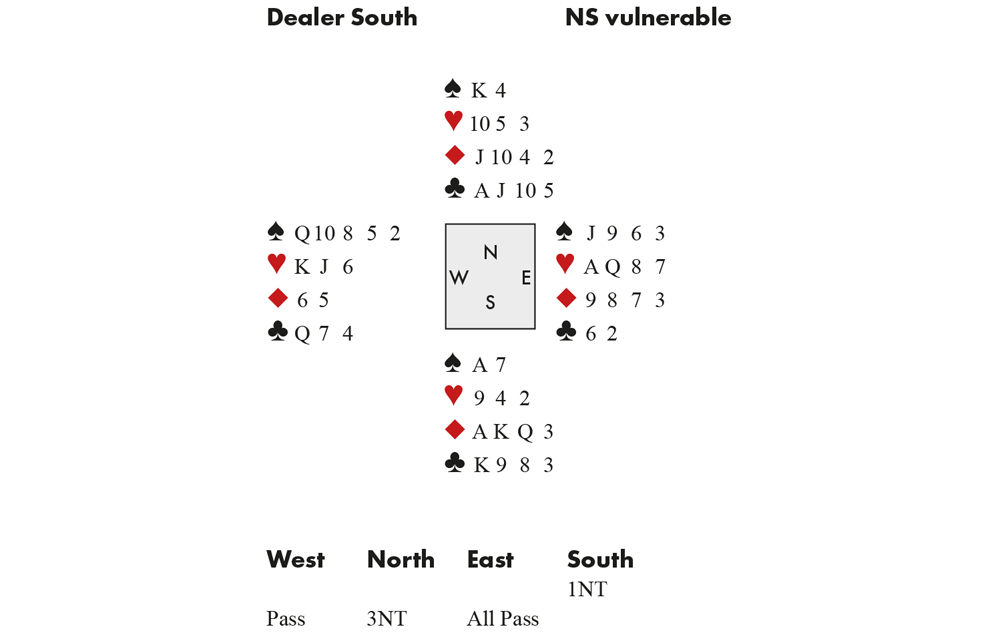They say a two-way finesse is never a complete guess: there are always clues to be gleaned from the bidding and play. That’s not strictly true, as the great Giorgio Belladonna once demonstrated at a tournament when, after a long think, he turned to a kibitzer and asked him to toss a coin.
But even with nothing concrete to go on, you can often rely on psychological inferences – an untimely hesitation, for instance, or feigned nonchalance from one of the opponents, which, as P. Hal Sims argued, made it far more likely he held the queen. Alan Truscott’s advice was always to play your left-hand opponent for the queen: it can be a dangerous card to lead away from, so that might be one reason he didn’t lead the suit. Personally, I like my friend Gary Bell’s suggestion: finesse into whichever opponent you find less annoying; it’ll hurt less if they win.
There is another excellent way to flush out a queen, which many players overlook.
In a recent duplicate, most Souths were in 3NT. West led the 5♠️ to East’s ♠️J and declarer’s ♠️A. South has eight tricks, and needs a third club, but can’t afford to lose the lead. Many players cashed diamonds to learn more about the distribution. Some cashed a top club in case the queen was singleton. But a couple of experts chose another way: at Trick 2, before giving anything away, they played the ♣️9. It’s hard for West not to cover if he has the ♣️Q. South might be leading from ♣️9x; if he ducks, and East wins the ♣️K, a second finesse will produce three tricks. Even if South has ♣️98, it looks like the ♠️K is the only entry to dummy, so when declarer wins and plays low, East can duck. Bad luck, West – a thoughtful defence can backfire.







Comments
Join the debate for just £1 a month
Be part of the conversation with other Spectator readers by getting your first three months for £3.
UNLOCK ACCESS Just £1 a monthAlready a subscriber? Log in